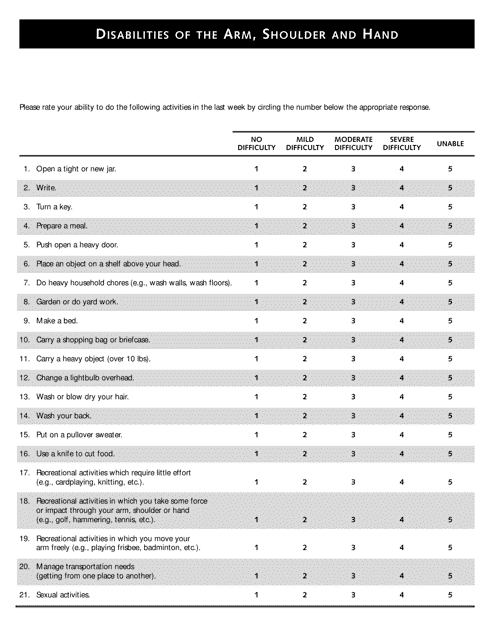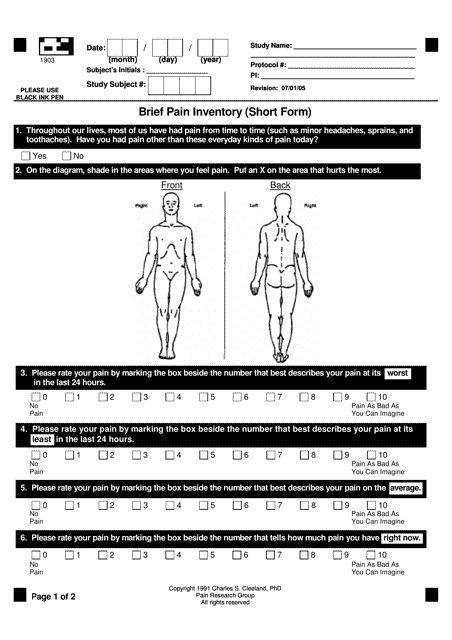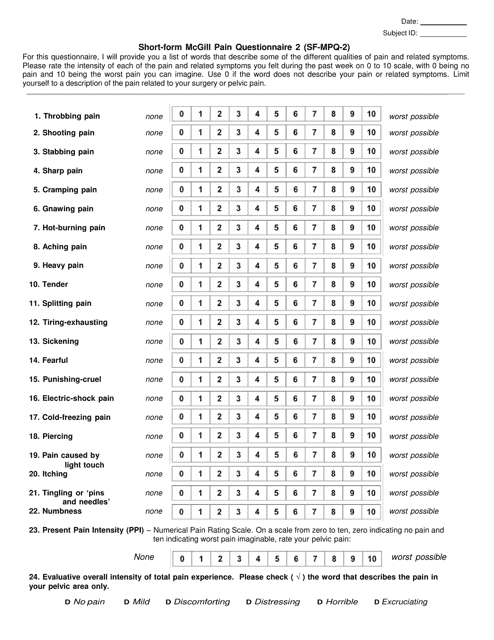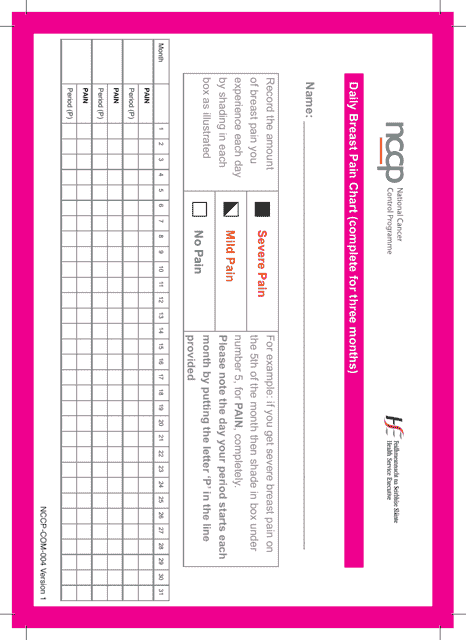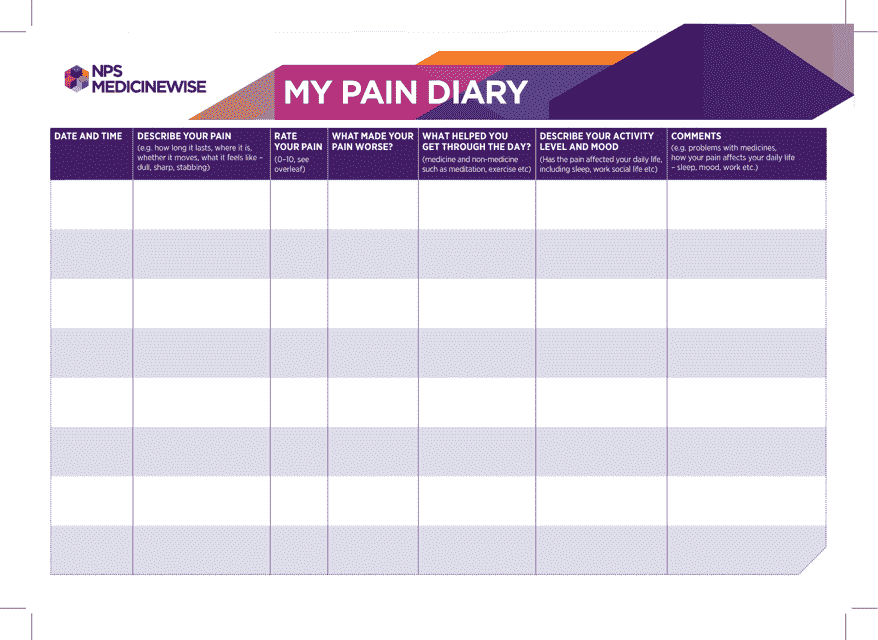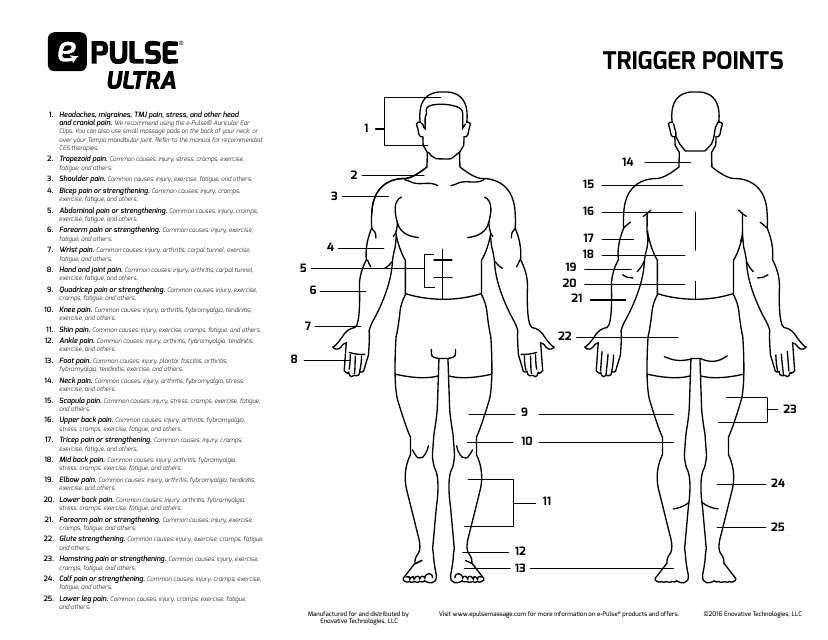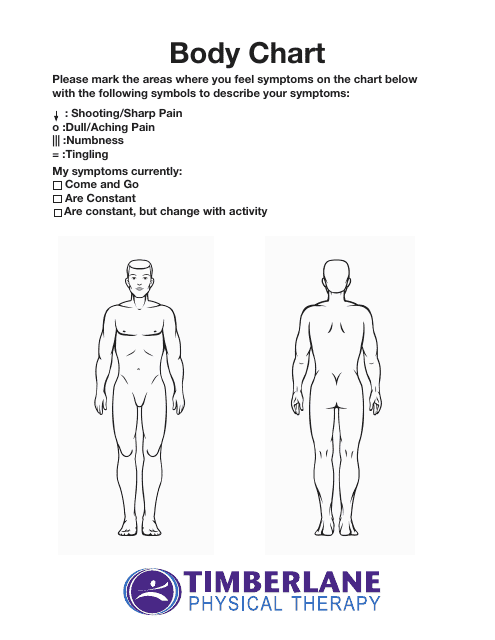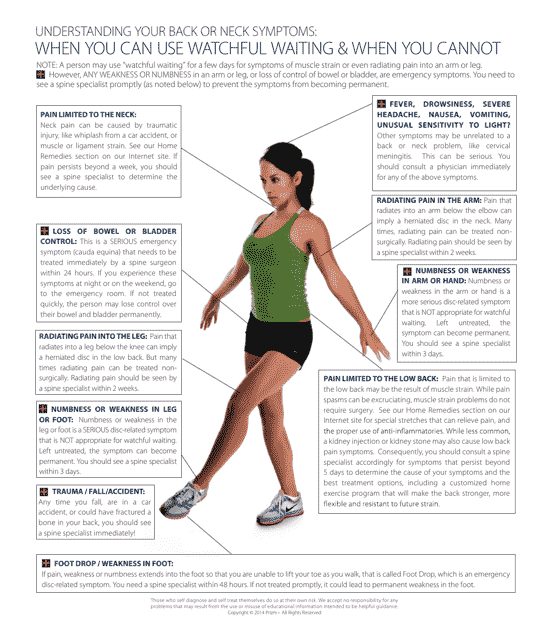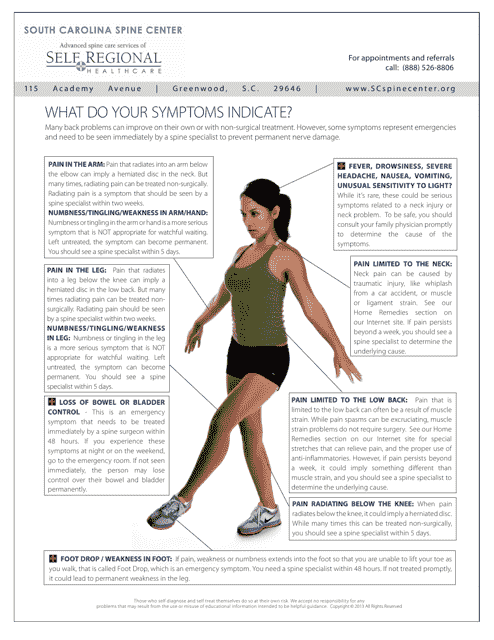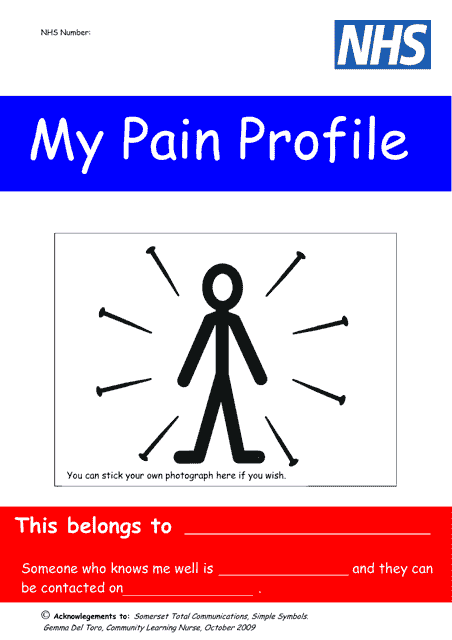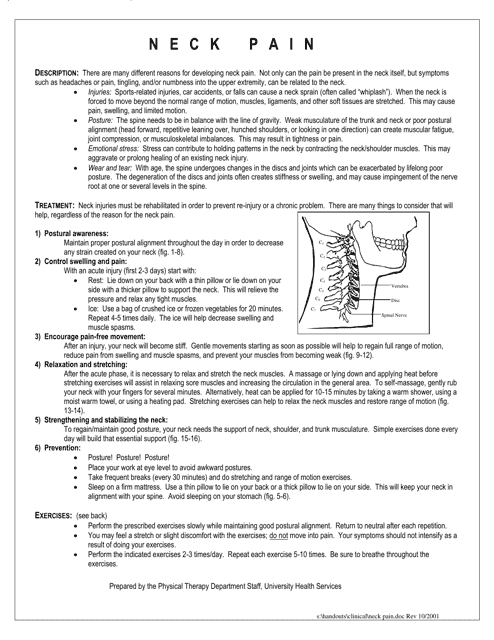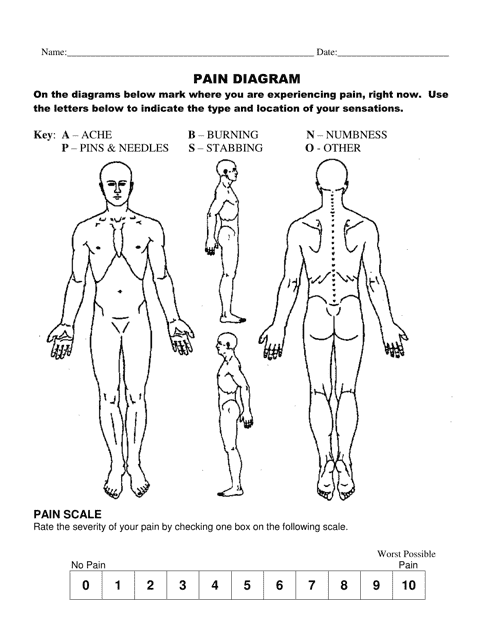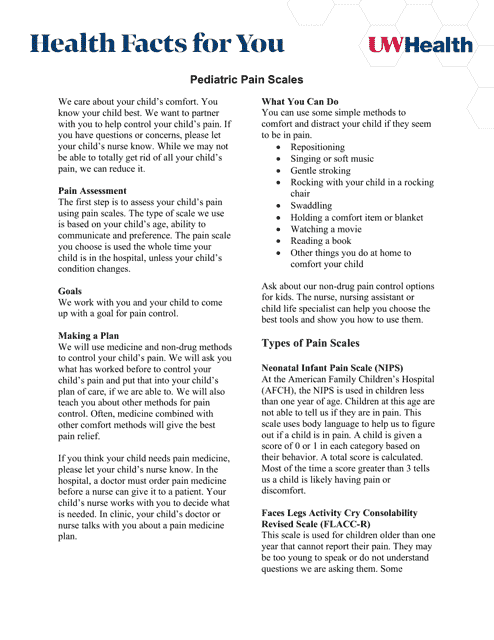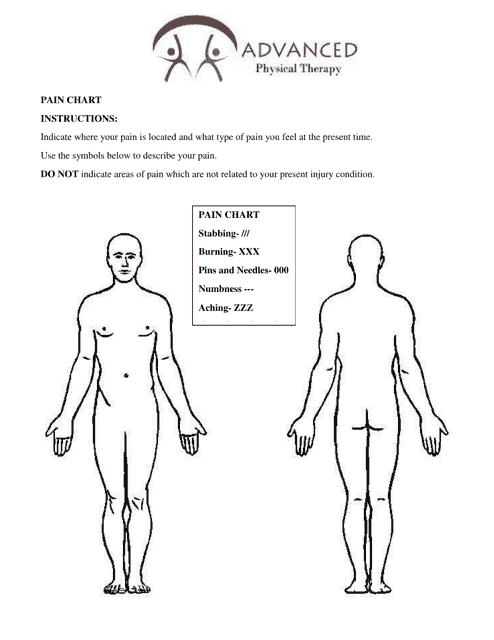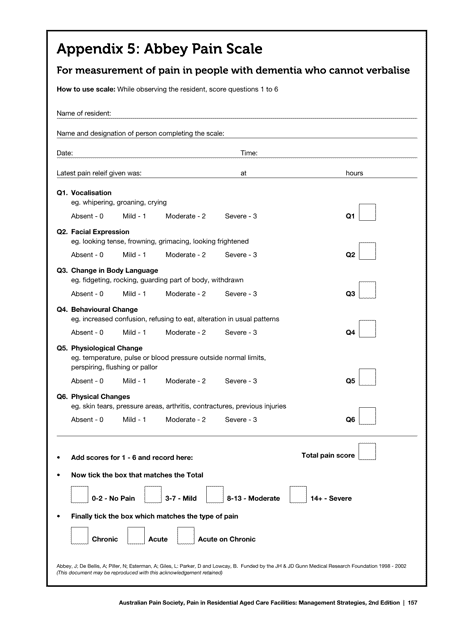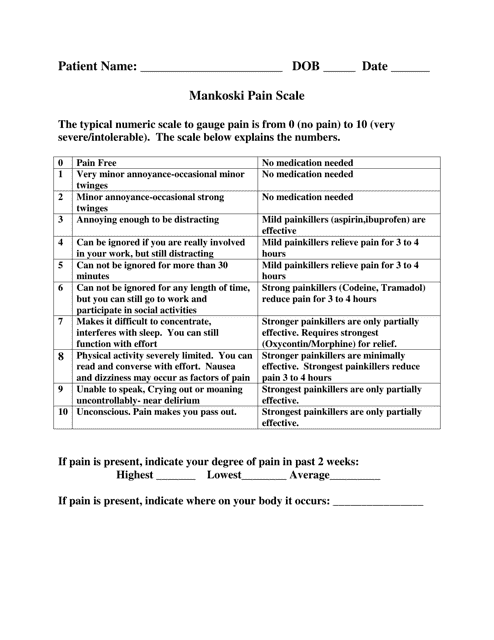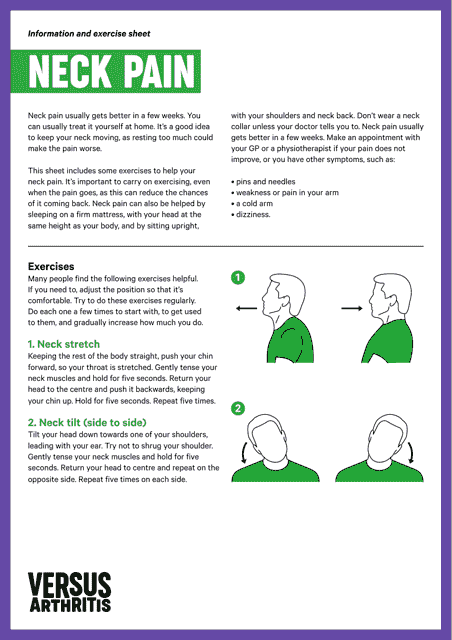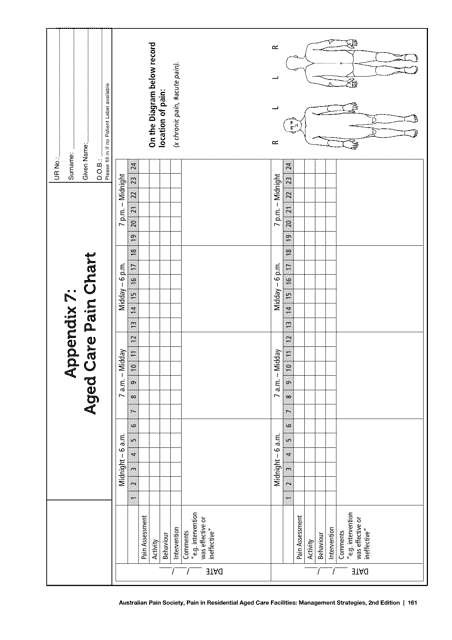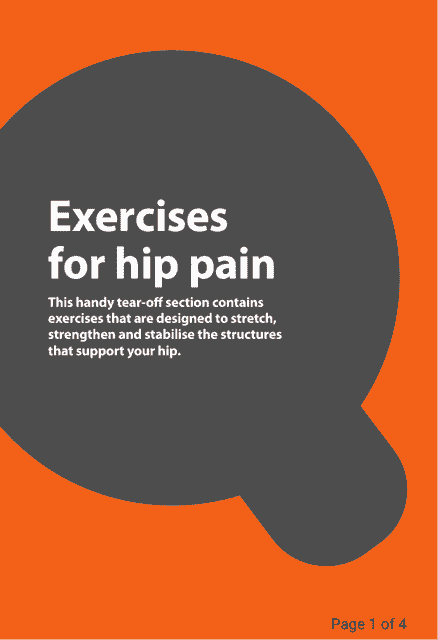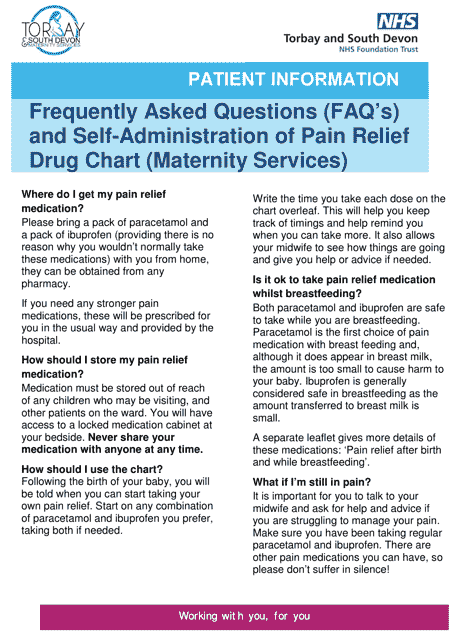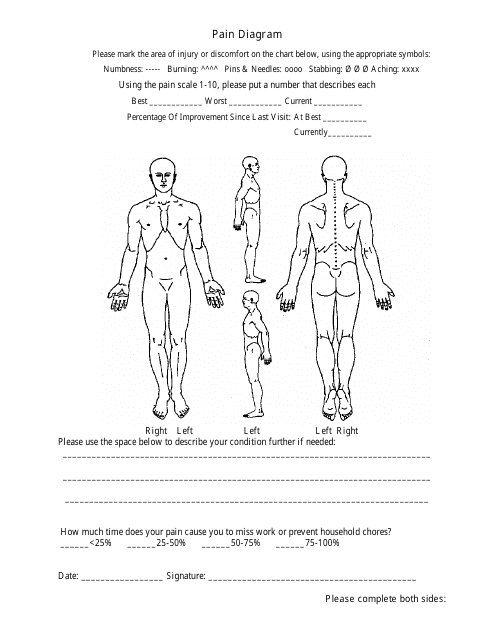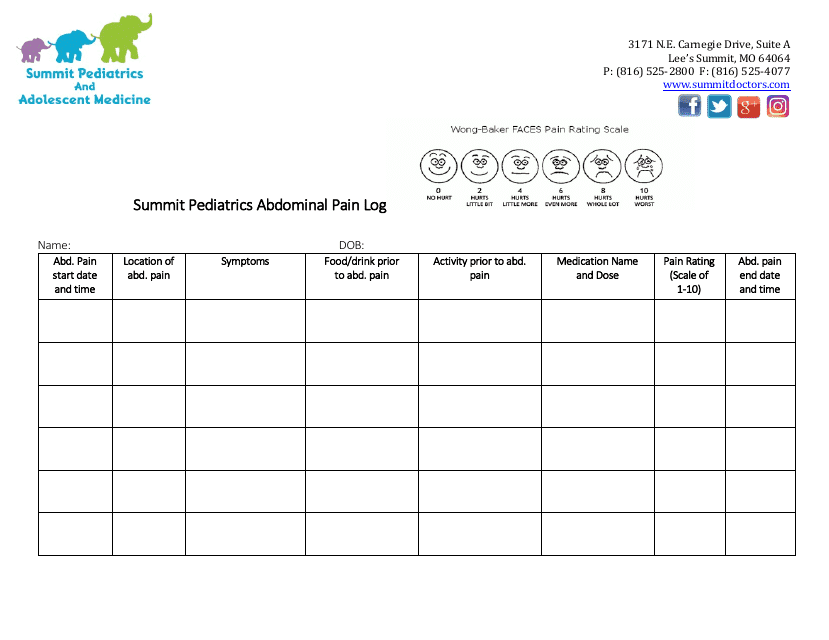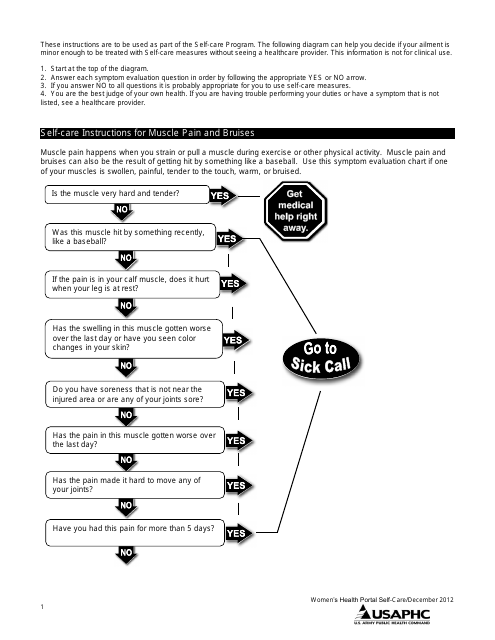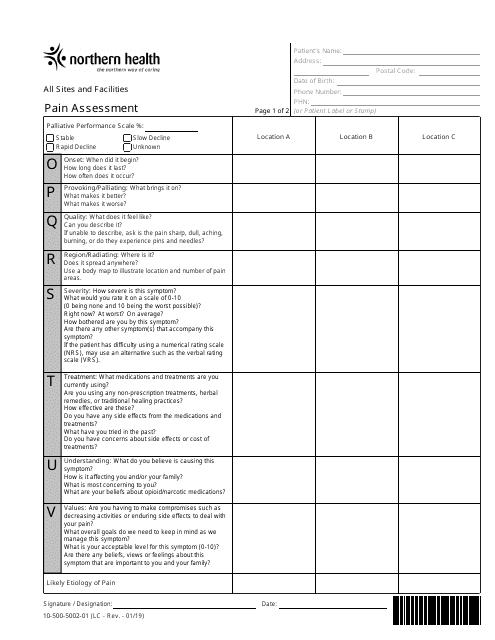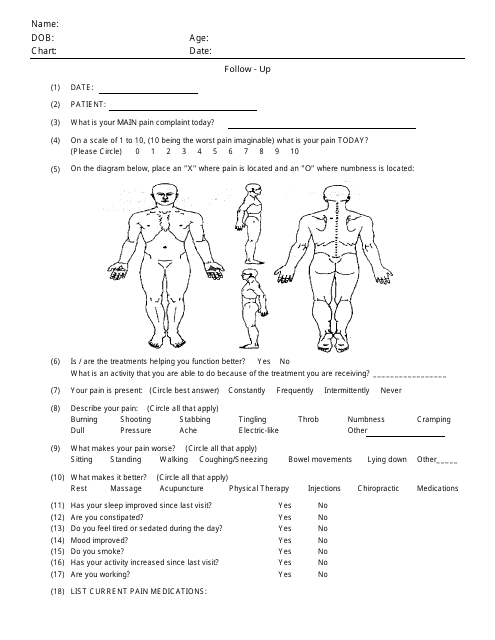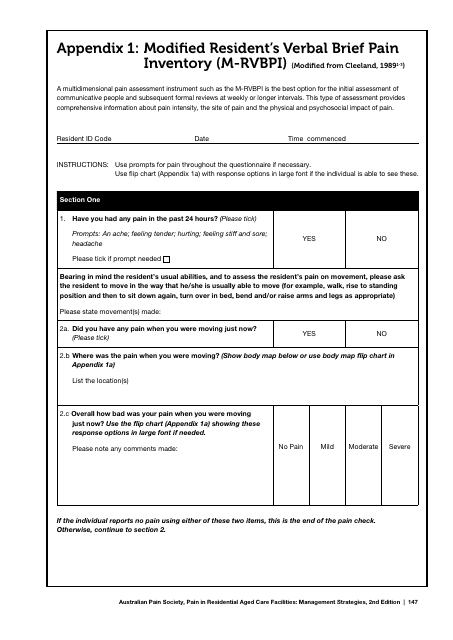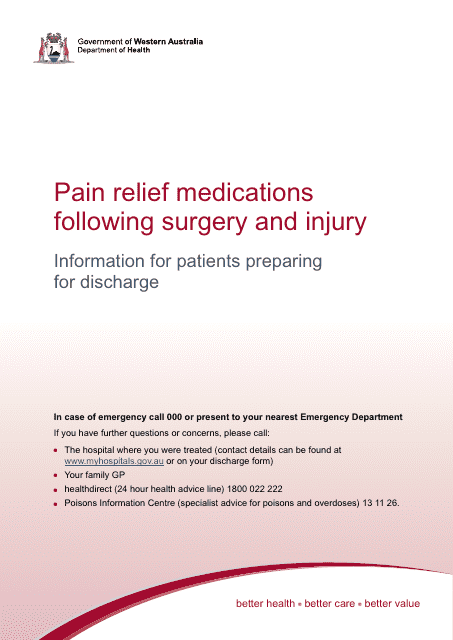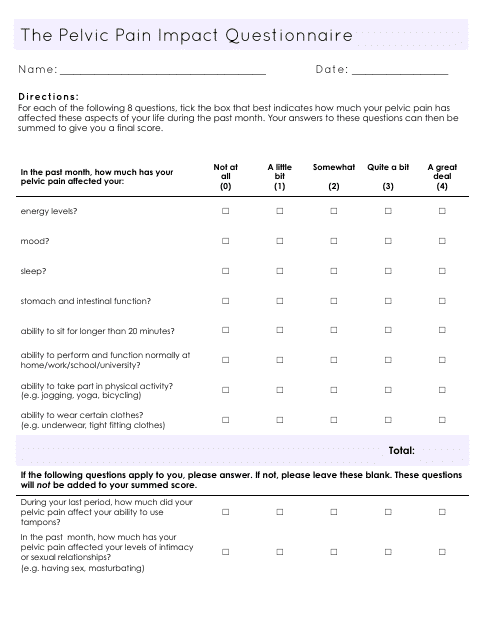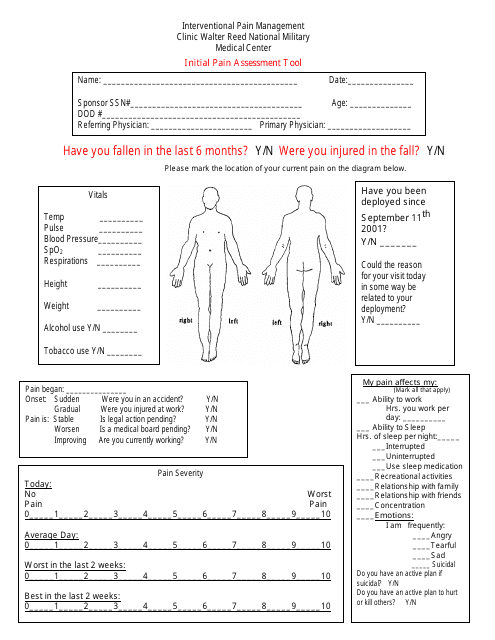Free Body Pain Chart Templates
Body Pain Chart: What Is It?
A Body Pain Chart refers to a visual pain assessment tool that outlines the entire human anatomy.
Alternate Name:
- Body Pain Diagram.
Whether you are a doctor who wants to pinpoint the exact location of pain during a physical examination of the patient, you are receiving medication for an existing illness or injury and want to record the painful sensations you are feeling on daily basis, or you are preparing a report on your symptoms for future treatment, this instrument will allow you to mark the body parts that hurt and disrupt the daily activities of the person suffering from pain.
Check out our library below to see a full list of Body Pain Chart templates.
To design a helpful chart, you should depict the person's front and back - number the body parts and provide their names next to the diagram you have made so that the user of the instrument knows what internal organ is demonstrated while they are checking their own physical condition or working with a patient. Alternatively, you can draw the lines from the potential source of pain and indicate the possible causes.
The chart may be accompanied by a scale that shows the intensity of pain - in case the patient is following the doctor's instructions and monitors any changes in their health status, they can evaluate their pain and later inform the physician what triggered a certain pain episode or how their body reacted to new medication. If you are specializing in a particular field of medicine, let your patients know about the painful symptoms they will suffer from to identify an issue quickly - for instance, specify the areas that will hurt when a person is having a heart attack on the diagram.
Still looking for a particular template? Take a look at the related templates below:
Documents:
37
This document is a pain assessment chart specifically designed for care homes, incorporating the Painad Scale. The chart helps caregivers to monitor and assess the level of pain experienced by residents in care homes. It provides a systematic approach to pain assessment and helps ensure appropriate interventions are implemented for residents' comfort and well-being.
This document provides an assessment tool for evaluating the disabilities of the arm, shoulder, and hand. The assessment tool is commonly referred to as the Dash Assessment Tool and is used by healthcare professionals to evaluate and measure the level of impairment in these areas.
This document is a questionnaire used to assess pain levels and the impact of pain on daily activities.
This document is a short-form questionnaire used at McGill University to assess the intensity and quality of pain experienced by an individual. It helps to understand and evaluate the personal experience of pain from a patient's perspective.
This document is a daily breast pain chart that allows individuals to track and record their breast pain on a daily basis. It can help identify patterns and provide useful information for healthcare professionals.
This document is a pain diary provided by NPS MedicineWise. It is used for recording and tracking pain levels over a specific period of time.
This document is a pain chart used by Advanced Physical Medicine to help assess and monitor pain levels in patients.
This document is a pain trigger points chart created by Enovative Technologies, LLC. It provides information on specific points on the body that can trigger pain and discomfort.
This document is a visual representation of the human body. It is commonly used in medical and health fields to document physical examinations, pinpoint pain or injury locations, and facilitate understanding of human anatomy.
This document is a checklist for watchful waiting for back or neck symptoms. It helps track and monitor symptoms for better understanding and treatment.
This document provides a chart that lists the different symptoms associated with back pain. It is used by the South Carolina Spine Center to help patients identify their specific symptoms.
This document is a patient profile used by the NHS (National Health Service) in the UK. It contains important information about a patient's medical history, current medications, allergies, and contact details.
This form is used for assessing and monitoring your own pain levels. It helps you to track and understand the intensity and severity of your pain.
This document is a pain questionnaire developed by Ronald Melzack at McGill University. It is used to assess and measure the intensity and quality of pain experienced by individuals.
This document provides a sheet of exercises specifically designed to help relieve neck pain. These exercises can be followed to improve neck strength and flexibility, and potentially reduce discomfort.
This document is for recording and mapping the location and intensity of pain experienced by an individual. It is often used in medical settings to track and communicate pain symptoms.
This document provides information on different pediatric pain scales used to assess and measure pain levels in children. It includes descriptions of the various scales and how they are used by healthcare professionals to evaluate and manage pain in pediatric patients.
This document provides a visual representation of different levels of pain on a chart. It helps individuals communicate and track their pain levels with healthcare professionals.
This document provides a pain scale that is specifically designed for measuring pain in individuals with dementia who are unable to communicate verbally.
This document describes the Mankoski Pain Scale, a tool used to measure and communicate pain levels.
This document provides information and exercises to help with neck pain. It includes tips for managing and relieving neck pain and a series of exercises specifically designed to strengthen and stretch the neck muscles.
This chart is used in aged care settings to track and assess pain levels in elderly individuals.
This document provides a sheet of exercises specifically designed to help alleviate hip pain. It includes step-by-step instructions and illustrations for performing each exercise.
This document is a log for self-administering pain relief medications. It helps individuals keep track of the time, dosage, and effectiveness of their pain relief treatments.
This document is a reference tool used by healthcare professionals to understand and record a patient's pain level, pinpoint its exact location, and track the duration or frequency of the symptoms. It provides tables for detailed annotations about the patient's pain experience.
This document provides a visual guide to dermatomes, which are specific areas of the skin innervated by spinal nerves, aiding healthcare professionals with neuromuscular assessments.
This document is designed for patients to keep track of their abdominal pain episodes. It includes specifying the times, duration, intensity and other relevant details about each stomach ache, aiding in better diagnosis and treatment by healthcare providers at Summit Pediatrics.
This document is a self-care chart that provides information on how to manage muscle pain and bruises. It offers tips and remedies that can be used at home to alleviate discomfort and promote healing.
This document is primarily used by healthcare professionals to evaluate and measure a individual's level of physical pain. It assists in tracking the progress of pain management strategies.
This document is utilized in the medical field to gauge the intensity and nature of a patient's pain. It aims to provide standardized and quantifiable data which can guide treatment decisions.
This document is a tool employed mainly in medical fields for evaluating and managing the intensity and nature of a patient's pain. The M-Rvbpi helps to facilitate conversations between healthcare providers and patients about pain symptoms.
This document provides comprehensive guidelines discussing various methods and protocols for managing and mitigating pain, specifically designed for individuals residing in Western Australia, Australia. It can be beneficial for healthcare providers, patients, and caregivers in understanding effective pain relief strategies.
This document is designed to visually represent and rate an individual's pain level, helping medical professionals understand the individual's pain intensity and location.
This document serves as a tool for patients to accurately describe and pinpoint their pain to Healing Hands Chiropractic professionals, helping the practitioners to diagnose and treat the discomfort efficiently.
This document provides critical information on pediatric pain management techniques and tools. It's intended for healthcare professionals who need quick access to pain assessment guidelines and treatment options specifically designed for children's unique needs.
This document is an assessment tool utilized to evaluate the impact of pelvic pain on an individual's overall health and quality of life. It is typically used in medical settings to guide treatment plans and better understand patients' discomfort.
This document is utilized for evaluating a patient's initial level of pain. It helps healthcare professionals determine the severity, location, and type of discomfort, to provide appropriate treatment.


